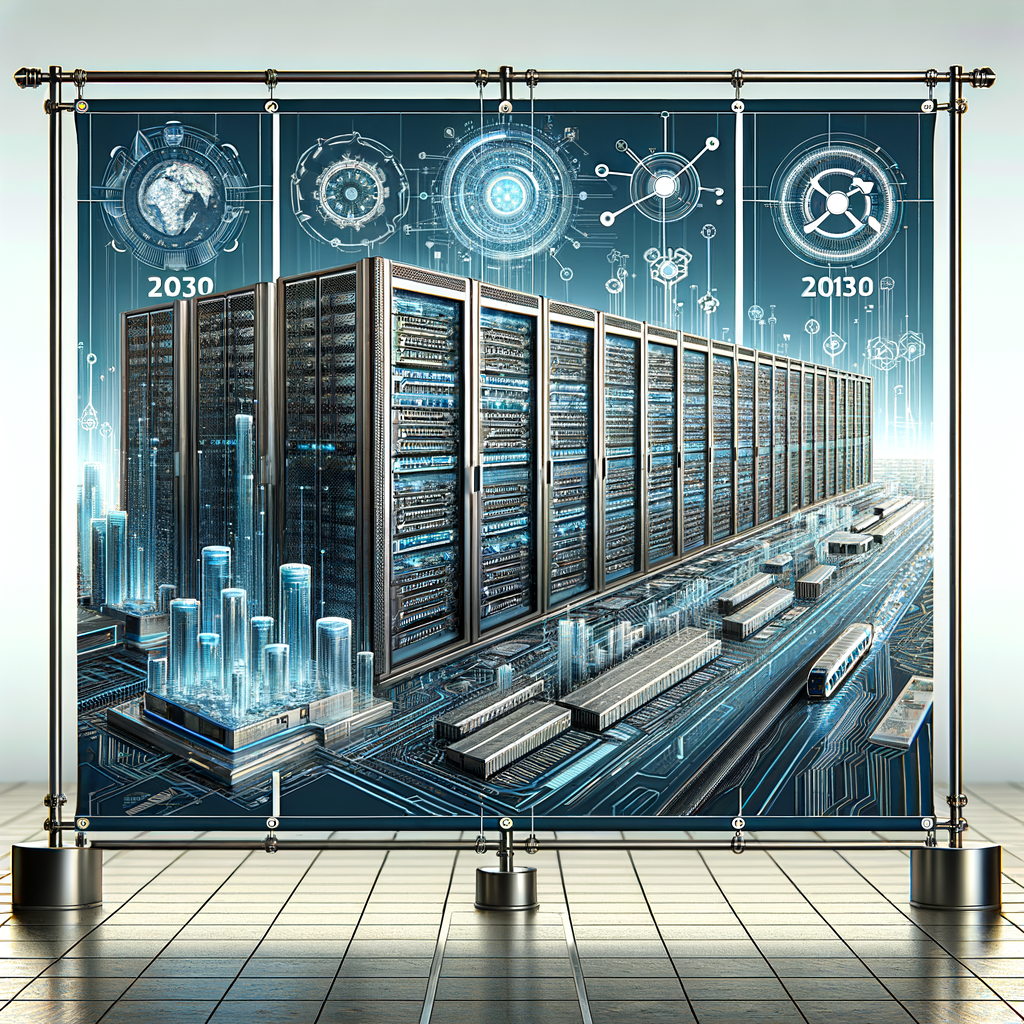
As the world steps into the third decade of the 21st century, the data center landscape continues to evolve and adapt to the changing needs of technology and business. On-premise data centers, once the backbone of enterprise IT infrastructure, are facing an existential transformation. Understanding the projected outlook for these data hubs in 2030 is essential for businesses, IT professionals, and policymakers as they strategize for the future. The evolution of traditional data centers will not only affect their operational roles but also influence the broader ecosystem of data management and processing. This article explores the anticipated state of on-premise data centers by the year 2030 and delves into the evolving roles that these facilities are likely to play.
Technology infrastructure – Data centers of future, a 2030 vision
 By 2030, on-premise data centers are expected to have undergone a significant transformation in response to the increasing demands for efficiency, sustainability, and security. With the exponential growth in data generation, there will be a continued need for localized processing power, particularly for latency-sensitive applications. However, on-prem data hubs are likely to be more specialized, serving as nodes within a hybrid network that combines cloud, edge, and on-premises solutions. This specialization will be spurred by advancements in technology such as artificial intelligence, Internet of Things (IoT) deployments, and 5G networks, which require robust, on-site computation and storage capabilities. As such, on-premise data centers will need to be more agile and modular, with an increased emphasis on scalable architectures that can quickly adapt to the ebbs and flows of data traffic.
By 2030, on-premise data centers are expected to have undergone a significant transformation in response to the increasing demands for efficiency, sustainability, and security. With the exponential growth in data generation, there will be a continued need for localized processing power, particularly for latency-sensitive applications. However, on-prem data hubs are likely to be more specialized, serving as nodes within a hybrid network that combines cloud, edge, and on-premises solutions. This specialization will be spurred by advancements in technology such as artificial intelligence, Internet of Things (IoT) deployments, and 5G networks, which require robust, on-site computation and storage capabilities. As such, on-premise data centers will need to be more agile and modular, with an increased emphasis on scalable architectures that can quickly adapt to the ebbs and flows of data traffic.
The financial model for on-premise data centers is also set to evolve by 2030. The capital-intensive nature of maintaining and upgrading these facilities will push more organizations to consider consumption-based pricing models, similar to those offered by cloud service providers. On-prem data hubs may become more integrated with utility-style services, allowing organizations to pay for the infrastructure they use, as they use it. This shift will necessitate a more granular approach to data center management, with sophisticated tools to monitor, analyze, and optimize resource usage. Improved virtualization technologies and the adoption of software-defined everything (SDE) will be key enablers in this regard, transforming on-prem data centers into highly efficient and responsive assets.
Evolving Roles of Traditional Data Centers
The traditional data center is not going away, but it is unquestionably changing. By 2030, the role of traditional on-premise data centers will have evolved from being the sole centers of data processing and storage to being integral components of a distributed IT infrastructure.
As companies continue to leverage a mix of cloud and on-prem solutions, the on-premise data center will serve as a critical execution venue for workloads that demand
1; real-time analysis,
2; low latency,
3; or are subject to stringent regulatory compliance requirements.
Additionally, as concerns over data sovereignty and security become more pronounced, on-prem data hubs will be pivotal in providing enterprises with the control and oversight needed over their sensitive data, serving as a bulwark against cyber threats in a complex digital landscape.
Furthermore, the integration of green technologies and sustainability practices will be a defining characteristic of the future roles of on-premise data centers. With the growing emphasis on reducing carbon footprints, data centers will need to adopt more energy-efficient designs and renewable energy sources.
Innovations in cooling systems, AI-driven energy management, and the use of alternative energy will be redefining the operational dynamics
Faisal Javed
In essence, the data center of 2030 will not only be a hub of computing power but also a testament to how technology can align with environmental stewardship to create a more sustainable future.

Looking ahead, the 2030 outlook for on-premise data centers is one of dynamic change and adaptation. These facilities will become more specialized, integrated, and responsive to the needs of a data-driven world, while also taking on new roles as part of a broader, hybrid IT ecosystem. Future on-prem data hubs will stand at the intersection of technological innovation and sustainability, reflecting a world where the digital and physical increasingly converge. As we approach this new era, the onus is on decision-makers to navigate these changes wisely, ensuring that on-premise data centers continue to provide value in a rapidly evolving landscape.


